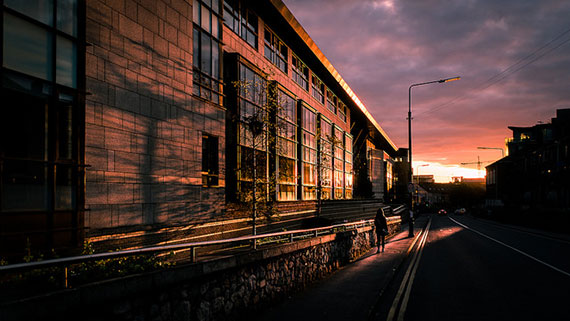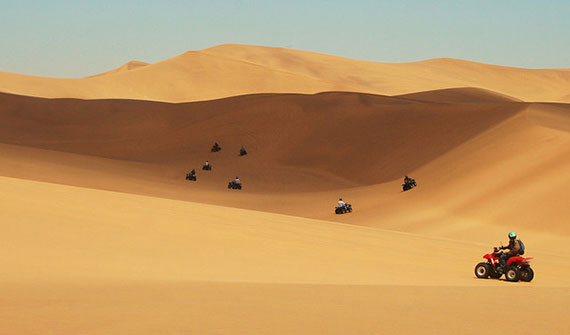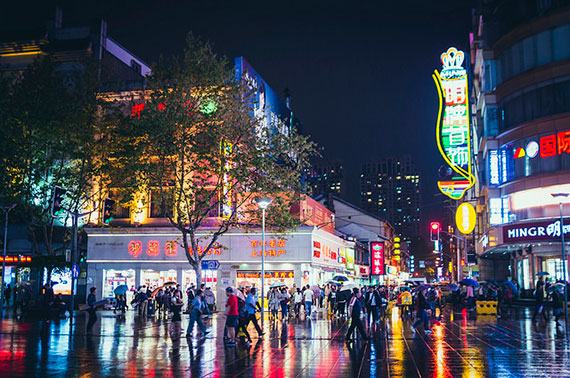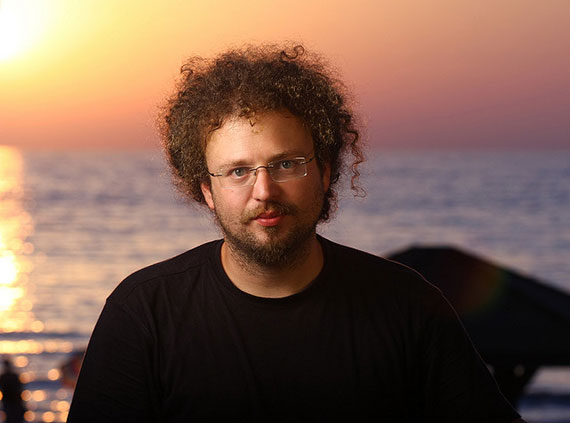Getting the right exposure is essential to any quality photo. Exposure is the amount of light that is let into the camera which contributes to the photograph that is recorded. A good exposure has the correct amount of light to produce a balanced shot.

Photo by Giuseppe Milo; ISO 125, f/6.3, 1/100-second exposure.
Light is the key word here. Allowing the correct amount of light in can be tricky, but luckily our cameras have automatic features that measure it. Some cameras allow a manual feature, which means we can manipulate the amount of light that reaches the camera’s sensor. If we allow too much, the photograph becomes overexposed, meaning the image is too light and washed out. Details become hard to see in an overexposed picture.
To the same effect if we let too little light in, the photograph is underexposed. This means that the picture is darker than it should be. This makes the photograph look shadowy and gloomy, but underexposing is still better than overexposing. Why? Because the picture can be lightened later and the detail will still be there, whereas in an overexposed picture, details cannot be rescued as they were never captured in the first place.
Your camera has a function to adjust the brightness. This is symbolized by the + or – symbol, normally allowing you to adjust the light by 3 stops either way. You need to do this before you take the image. So for example, you could take a photograph of a tree, and decide it is far too bright because of the sun. You need to change the exposure to -1, then take the shot again and see if it has helped. If it is still too bright you could reduce it to -2 and see if the shot is satisfactory.
This is sometimes called bracketing. When you take the same shot but at different exposures from -2 to -1 to 1 to +1 to +2, this is bracketing. It gives you the option to choose the best photograph of the bunch.
Metering
Metering is the way that your camera decides on the correct exposure. The meter in your camera measures the amount of light in the area where you are taking the photograph. Ideally, the camera will pick up on a mid toned area that is neither too dark nor too light, so that the light is balanced. When you buy a SLR camera you will be given a few options on how to meter your images.
There is ‘center weighted’ or ‘average metering’. This means that the camera will take an average of the light in the scene. Most cameras focus on the center of the photograph, whereas some take into consideration the edges. Since the focus of a picture is generally in the center of a frame, this produces a good overall result.

Photo by Jonathan E. Shaw; ISO 400, f/16.0, 1/500-second exposure.
Multi zone metering is also known as ‘Matrix metering’. This method calculates various zones in the scene to come up with the best exposure, normally from several spots. Different branded cameras will differ in results.
Then there is ‘Spot metering’. With this method, only a small area of the viewfinder is measured, typically a ‘spot’. For the best results, you should move the spot to a mid toned area so you get an even amount of light.
The advantage of spot metering is that it is very accurate and you can control it tightly. It is good for difficult scenarios, for example, when we have a bright beam of light, then very dark areas. Too great of contrast between dark and light confuses the camera. Average metering would presume that the whole scene was bright and meter incorrectly. With spot metering, we can choose a grey area so that the camera will not overestimate the light and compensate accordingly.

Photo by Nathan Ceulemans; ISO 200, f/1.7, 1/25-second exposure.
A good way to become familiar with spot metering is by choosing the function and pointing it at different areas of the same scene and taking the photographs. Then compare how choosing the different areas affects the finished picture.
Most professionals will choose spot metering for landscape photography, as it gives greater control.
Where speed is important, Matrix metering is useful, as there is less guess work involved.
Flash
Flash is commonly used with point and shoot cameras, but it’s used with caution in landscape and wildlife photography. The flash is normally attached to the camera body. When the camera detects low light, the flash pops up automatically, although you can manually adjust the settings so that it will remain down.
If you require more power, you can buy a separate flash head. This is common in press and fashion photography, where they spend a lot of time working at night or indoors and they need to capture evenly lit images when there is plenty of action going on without any risk of blurring or poor lighting.

Photo by Yossi Gurvitz; ISO 100, f/8.0, 1/250-second exposure.
Flash is useful in a night time situation. If there is no other light source then you will have to use flash, although you can use creative techniques like delayed flash to capture some movement and trails of light.
Overall though, the effect with flash can be harsh. It is also unsuitable for reflective surfaces, like mirrors, as it will shine the bright light back into the camera. For landscape photography you need to know how to turn the flash off, especially if you are using a slow shutter speed for the specific blurring, as the camera will automatically want to use flash.
Flash is useful in extremely dark situations as a fill-in light. This is called flash fill, and is used when you have a bright sun behind the subject and all that is left is the silhouette of the object. Using flash will put the detail back into the image.
About the Author:
Article written by Sharon Cutajar from NaturalPhotography.
Like This Article?
Don't Miss The Next One!
Join over 100,000 photographers of all experience levels who receive our free photography tips and articles to stay current:






Great info and easy to understand, thanks for posting. I rarely use flash and have never changed the metering mode.
Great article! Just one area that might need to be ‘touched up’ on for a select few out there.
In regards to the information about an underexposing or overexposing of a photograph, the results would differ in the old school world of film (that is when shooting negative film, vs. positive slides). I know there are a few out there who are resisting the digital age, and that’s okay! I wish I sitll had access to a darkroom!
In the old days of film (or current for some), if a photo (negative) was underexposed this would produce a virtually transparent negative with hardly any image being captured. This usually meant that all hope of correcting the exposure in the dark room was lost. No image on the neg means no image on the photo paper.
If a photo (negative) was overexposed, this meant too much light entered through the camera lens, and, subsequently, onto the film. This would have produced an expremely dark image on the negative, though it still would have been captured. Once in the darkroom, a longer exposure would be necessary to pass through the ‘dense’ negative. I can recall enlarger exposure times of over 30 or 45 seconds!
If you’re negatives came out dark from the developing cans, you were able to breathe a sigh of relief. I they came out ‘thin’ or clear, there was an extreme sense of lost!
My how photography has changed! Now you can just check out the exposure on the back of your camera and know right away whether or not you got your ‘money shot’.
Happy shooting,
Jason Hernandez
http://jasonhernandezphotography.com
http://theclientfinder.com